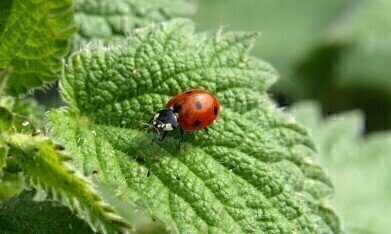GC, MDGC
What is Chemical Ecology?
Mar 10 2015
Chemical ecology is the science behind animal and plant interaction. By studying every possible chemical mechanism and reaction that takes place during organic interaction, scientists from the disciplines of biology, chemistry, mathematics and psychology can work together to understand more about the science behind life on Earth.
Chemical ecology revolves mainly around the study of semiochemicals. Semiochemicals are the substances which all living matter (flora, fauna, bacteria, fungi) use to communicate data about their physical status, feeding habits, nutrition, reproductive methods, social order and other vital information. By understanding the fluctuation of semiochemicals, we can better understand the chemistry behind ecology.
Learning about Behaviour
Having isolated the particular genes which are responsible for “odour-types”, scientists are able to determine what effect these odour-types will have on mating rituals, inbreeding habits and genetic diversity. An odour-type is the unique olfactory signature which differentiates one species and individual from another.
One such use of chromatography to further knowledge in this field is the application of gas chromatography and mass spectometry (GC-MS) in cuticular hydrocarbons. Such analysis helps scientists to understand more about courtship protocol, aggression between species members and mating rituals.
Learning about Disease Prevention
The study of odour-types doesn’t only allow us to learn more about behavioural patterns. Studies at the Monell Chemical Senses Centre in Pennsylvania have revealed that the body odour of mice actually changes when they become infected with a disease. Infection with a retrovirus triggered an imbalance in their immune system, which caused a slight variation in their body odour detectable to other mice.
Such information may ultimately be able to lead to better understanding of such diseases in humans. For example, scientists were able to discern that mice infected with malaria were then more susceptible to being bitten again by other mosquitoes (potentially uninfected ones, thus propagating the disease more rapidly), solely due to a change in their body odour. To learn how this knowledge could ultimately help in the fight against the airborne killer – and how chromatography can help to bring it about – read this article: Fighting Malaria's Bad Air with Chromatography.
Learning about Repellents
Odour-types can also offer up useful information about hunting patterns. The scientists at Monell have been working in conjunction with the US Department of Agriculture to study the chemical ecology behind predatory behaviour in wildlife species. Once they understand more about the chemical elements which alert predators to the presence of their prey, they can set about manufacturing more effective repellents to prevent attacks – or attractants to increase them.
One such application of this science could be in helping zoo-keepers evade tiger attacks. If we are better able to understand which hormones and chemicals invite predatory attacks from our feline friends, we can design a more effective repellent to keep them at bay. This article, Find Out Why Zookeepers Love Chromatography... and Why Siberian Tigers Don't, talks in more detail about the role of GC-MS in furthering our knowledge in this area.
Events
Mar 18 2025 Beijing, China
Mar 25 2025 Paris, France
Mar 31 2025 Beijing, China
Apr 02 2025 Saigon, Vietnam
Apr 22 2025 Kintex, South Korea














